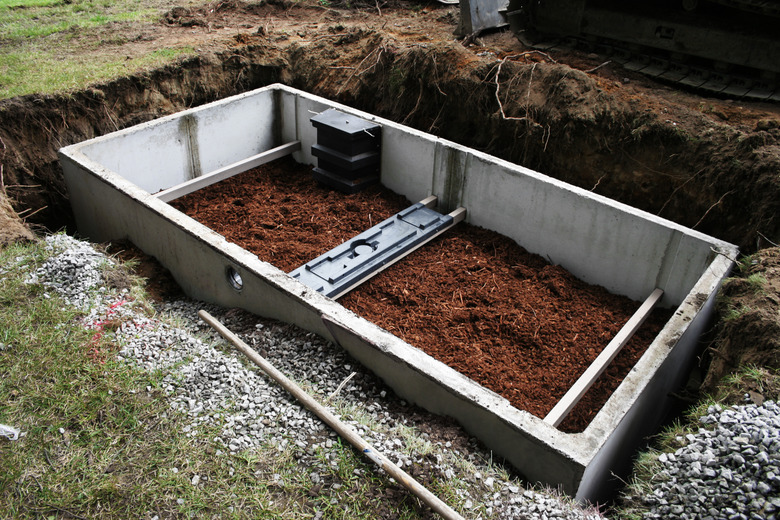How To Put Two Houses On One Septic System
Every dwelling unit generally requires its own septic tank, and each septic tank should have its own drain field. There are situations where sharing a single septic system is unavoidable, however, such as when two or more condominiums or mobile homes share the same plot of land. A shared septic tank or septic system raises usage and maintenance issues for the parties who share it, and not all local health departments permit it, but when sharing is both legal and practical, the actual plumbing isn't that complicated.
Potential Legal Issues
Potential Legal Issues
It's important to remember that a septic system is sized according to the number of bedrooms and bathrooms in the property it serves — not just the number of bathrooms. This is because the number of bedrooms is a better determination of the number of people who will be using the system. If you have a tank and drain field sized for five bedrooms and your house only has three, the tank could theoretically handle a second two-bedroom residence, but there are legal hurdles, and the arrangement could affect the value of your property.
You would need to apply for a permit. and the local health authority and building department — assuming they grant it — would probably require the owner of the original residence to grant a septic easement. The easement would be part of the deed and remain in force as long as the system is operable, and it could make the original property less desirable for potential buyers in the event of a sale.
Are You Sure You Want to Share?
A shared septic system presents a number of usage issues:
- If one household is conscientious about what they flush and the other one isn't, the conscientious household could suffer the consequences. For example, one household may flush sanitary products that could cause a blockage that causes effluent to back up into the basement of the other household.
- Septic systems require care and maintenance, and there has to be an agreement between parties as to how to share the expense.
- The shared situation could make additions to either house illegal.
- The septic company that does the installation could be liable for any issues that arise, and, for this reason, you may have trouble finding one willing to do the job.
How to Do the Hookup
How to Do the Hookup
Assuming all legal issues are resolved and appropriate agreements are put in writing, the actual hookup is fairly easy to accomplish.
If two houses are using the same septic tank, the waste lines from each of them must connect into a single line to feed the tank since septic tanks have only one inlet port. This is usually a simple matter of feeding the waste lines into an appropriate drainage tee that outlets into the tank. All lines must maintain the required downward slope toward the tank.
If each house has its own septic tank and the owners want to use a single drain field, the waste lines exiting the tank would have to meet at a common point, such as a distribution box, so a single line could feed the drain field. Septic systems that require a pump to transfer waste from the tank to the drain field are a special case to be discussed with a septic contractor and the local health authorities.
